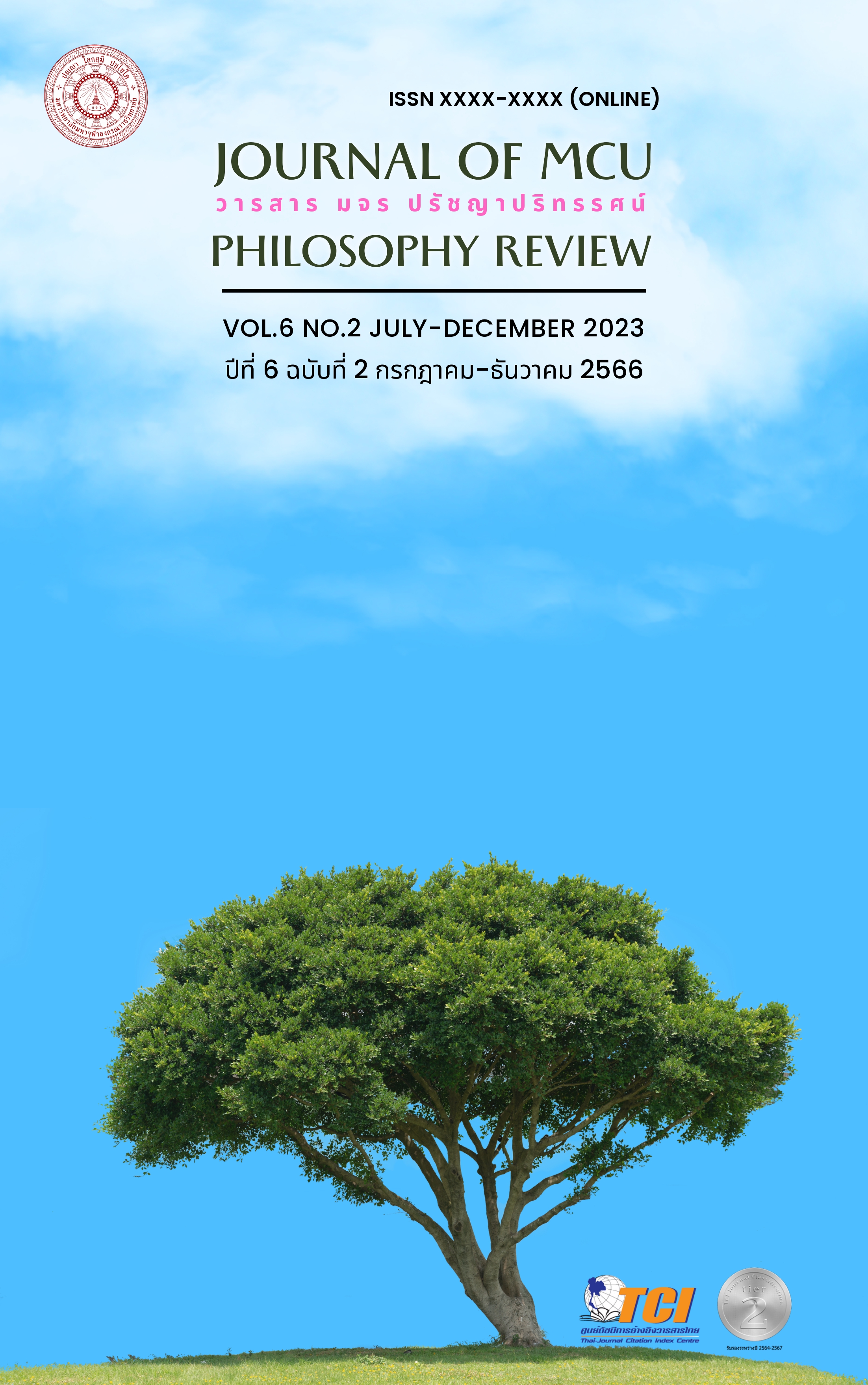A Concept of Yoga in Bhagavadgita: An Analytical Study
Main Article Content
Abstract
In this research, the objectives were critically analyzed the debates on the concept of Yoga in Bhagavad-Gita. This research employed the documentary research methodology. It was found that: 1) the concept of Yoga in Indian philosophy basically refers to two schools of Yoga: the school of Yoga that lays great emphasis on the practice of Yoga following the path of Bhakti-Yoga, Karma-Yoga and Jñãṇa-Yoga whereby purification of one’s mind is prioritized leading to Vivekañãṇa in order to attain Moksha, 2) it is strongly believed that the concept of Yoga in Bhagavad-Gita emphasizes on the peaceful existence of human beings where seeking for salvation amongst chaotic society could be made; it supports performance of duty in order to sustain the world through Karma aiming at the God which could be regarded as the one that depends itself on perfection more than the consideration of action as if the drop of water on the lotus’s leaf is without the penetration of sin into Jĩvatman because man is predetermined to do certain act according to the given duty that would yield the benefit to human beings in accordance with the principle of Karma-Yoga and Jñãṇa-Yoga which connects the relationship between man and God where Jĩvatman could be brought to be a part of Brahman. In the debate over the concept of Karma-Yoga and Jñãṇa-Yoga; on the one hand, Shankaracharya emphasized on Jñãṇa-Yoga only, on the other hand, Rãmãnuja included Bhakti-Yoga, Karma-Yoga and Jñãṇa-Yoga together. Therefore, it is argued that the concept of Yoga in Bhagavad-Gita accords with the explanation on Yoga of Rãmãnuja more than Shankaracharya’s one because Jñãṇa-Yoga poses the difficulty for worldly people to access; only ascetics could access it, so, the utilization of Karma-Yoga and Bhakti-Yoga together could lead to Jñãṇa-Yoga through performance of the worldly duty and such an explanation yield more benefit to their followers than the previous one.
Article Details

This work is licensed under a Creative Commons Attribution-NonCommercial-NoDerivatives 4.0 International License.
บทความที่ได้รับการตีพิมพ์เป็นลิขสิทธิ์ของวารสาร มจร ปรัชญาปริทรรศน์
ข้อความในบทความที่ได้รับการตีพิมพ์ในวารสาร ถือเป็นความรับผิดชอบของผู้เขียนบทความ และข้อคิดเห็นนั้นไม่ถือว่าเป็นทัศนะและความรับผิดชอบของกองบรรณาธิการวารสาร มจร ปรัชญาปริทรรศน์
References
กฤษณไทวปายนวยาส. (2561). ภควัทคีตา. แปลโดย สมภาร พรมทา. กรุงเทพมหานคร: สำนักพิมพ์วารสารปัญญา.
ฟื้น ดอกบัว.(2545). ปวงปรัชญาอินเดีย. กรุงเทพ: ศยาม.
ทองหล่อ วงษ์ธรรมมา. (2549). ปรัชญาทั่วไป. กรุงเทพมหานคร: สำนักพิมพ์โอเอส พริ้นติ้ง เฮ้าส์.
พระมหาวันดี กนฺตวีโร (ปะวะเส). (2563). “การวิเคราะห์อภิปรัชญาในคัมภีร์ภควัทคีตา”. พุทธศาสตรดุษฏีบัณฑิต สาขาปรัชญา. มหาวิทยาลัยมหาจุฬาลงกรณราชวิทยาลัย วิทยาเขตขอนแก่น.
แม่ชีจำเนียร แสงสิน. (2547). “การศึกษาเปรียบเทียบสมาธิในคัมภีร์โยคะสูตรกับคัมภีร์พระสูตรตปิฏก”. ศาสนศาสตรมหาบัณฑิต. บัณฑิตวิทยาลัย: มหาวิทยาลัยศิลปกร.
ไวภพ กฤษณสุวรรณ, พระศรีรัตโนบล และคงสฤษฎ์ แพงทรัพย์. (2564). ศึกษาเปรียบเทียบความเชื่อเรื่องการเกิดในศาสนาพราหมณ์-ฮินดูกับพุทธศาสนาเถรวาท. วารสารวิชาการสถาบันพัฒนาพระวิทยากร, 4(1), หน้า 20-34.
J.A.B.Van Buitenen. (1968). Ramanuja on the Bhagavadgita: A condensed rendering of his Gitabhasya with copious Notes and an Introduction. Delhi: Motilal Banarsidass.
Sri Sankaracharya. (1901). The Bhagavadgita. trans. by A. Mahadeva Sastri. 2nd edition. Mysore: The G.T.A. Printing Works.
Sri Swami Sachidananda. (2019). The Yoga Sutras of Patanjali. 8th Printing. Buckingham: Integral Yoga Publications.
Eleni Boliaki. (2012). Jnana, Bhakti, and Karma Yoga: Sankara and Ramanuja on the Bhagavad-Gita. theology, 1, p.326.
SHARMA ARVIND. (1986). The Hindu Gita: Ancient and classical interpretations of the Bhagavadgita. Illinois: Open Court.
Ellen Jane Briggs. (2008). Freedom and Desire in the Bhagavad Gita. Dissertation presented to Faculty of the Graduate School. The University of Texas at Austin.


